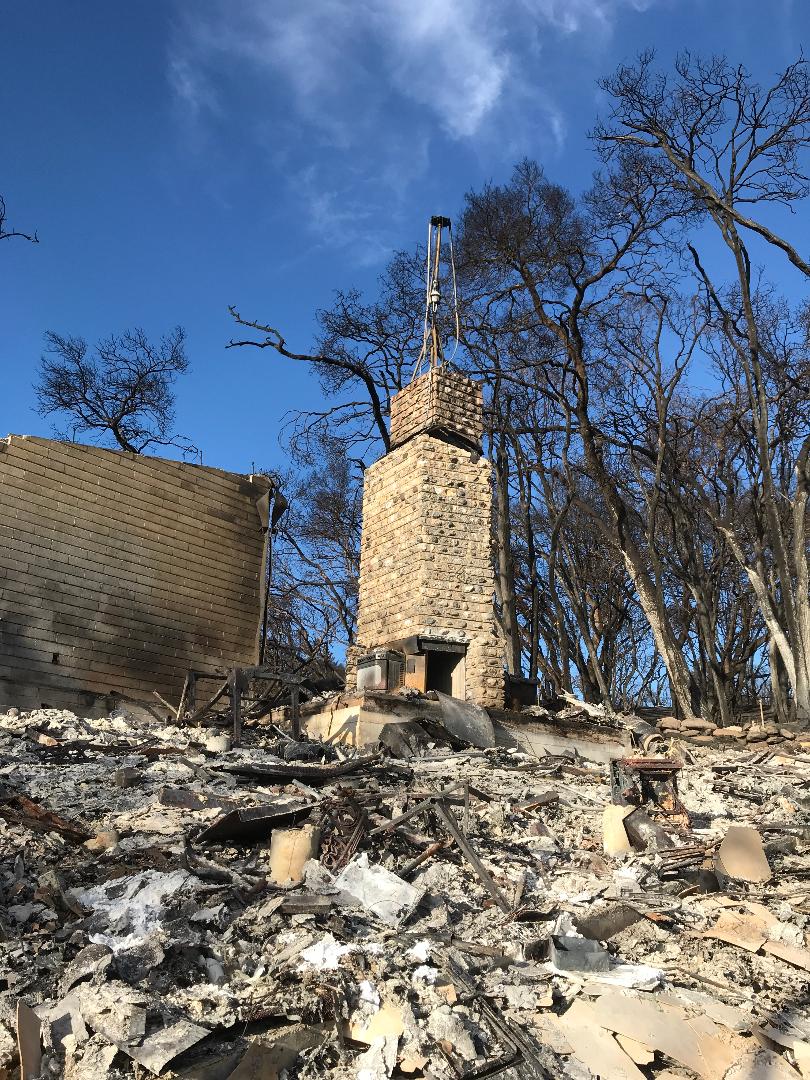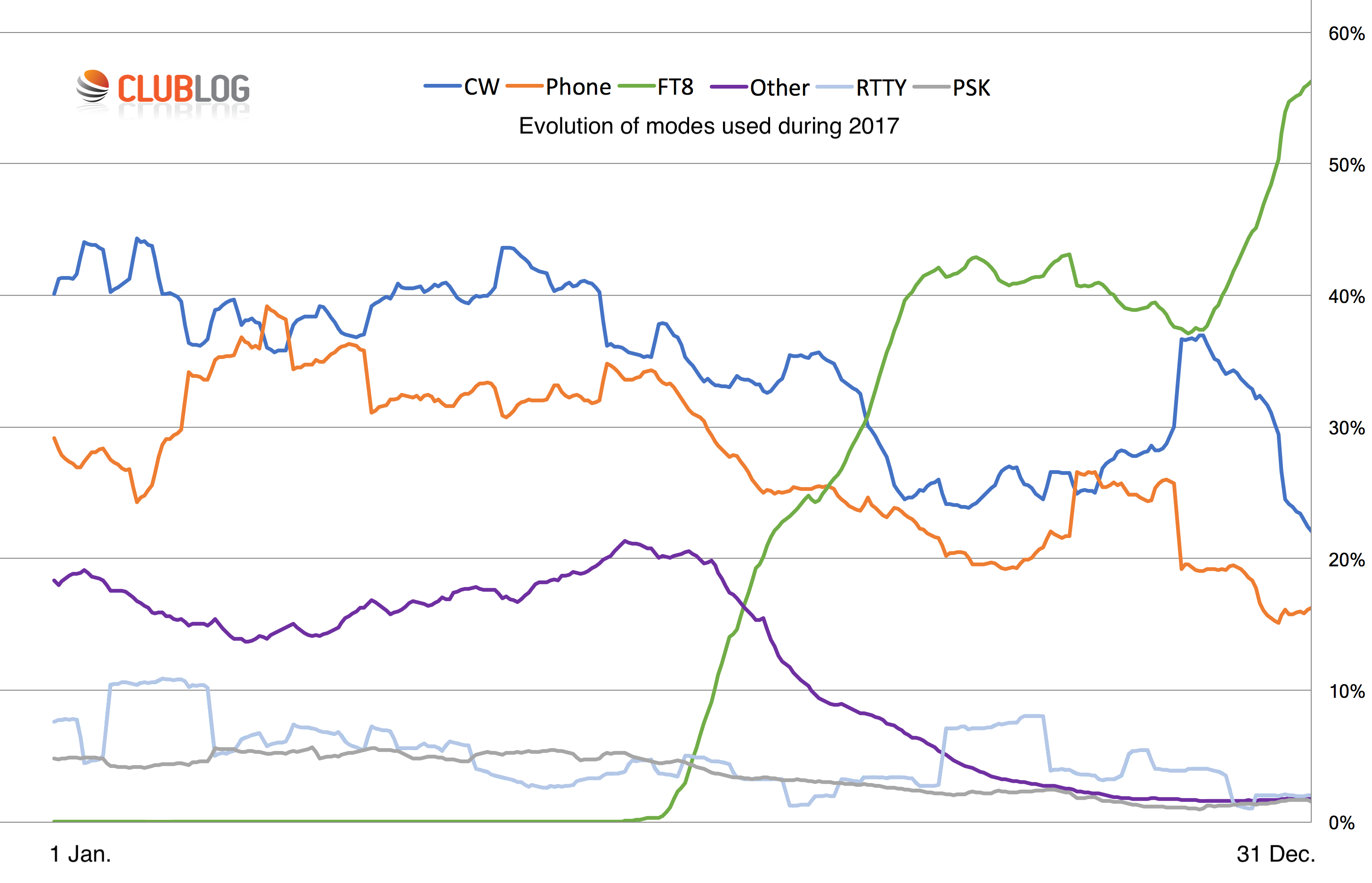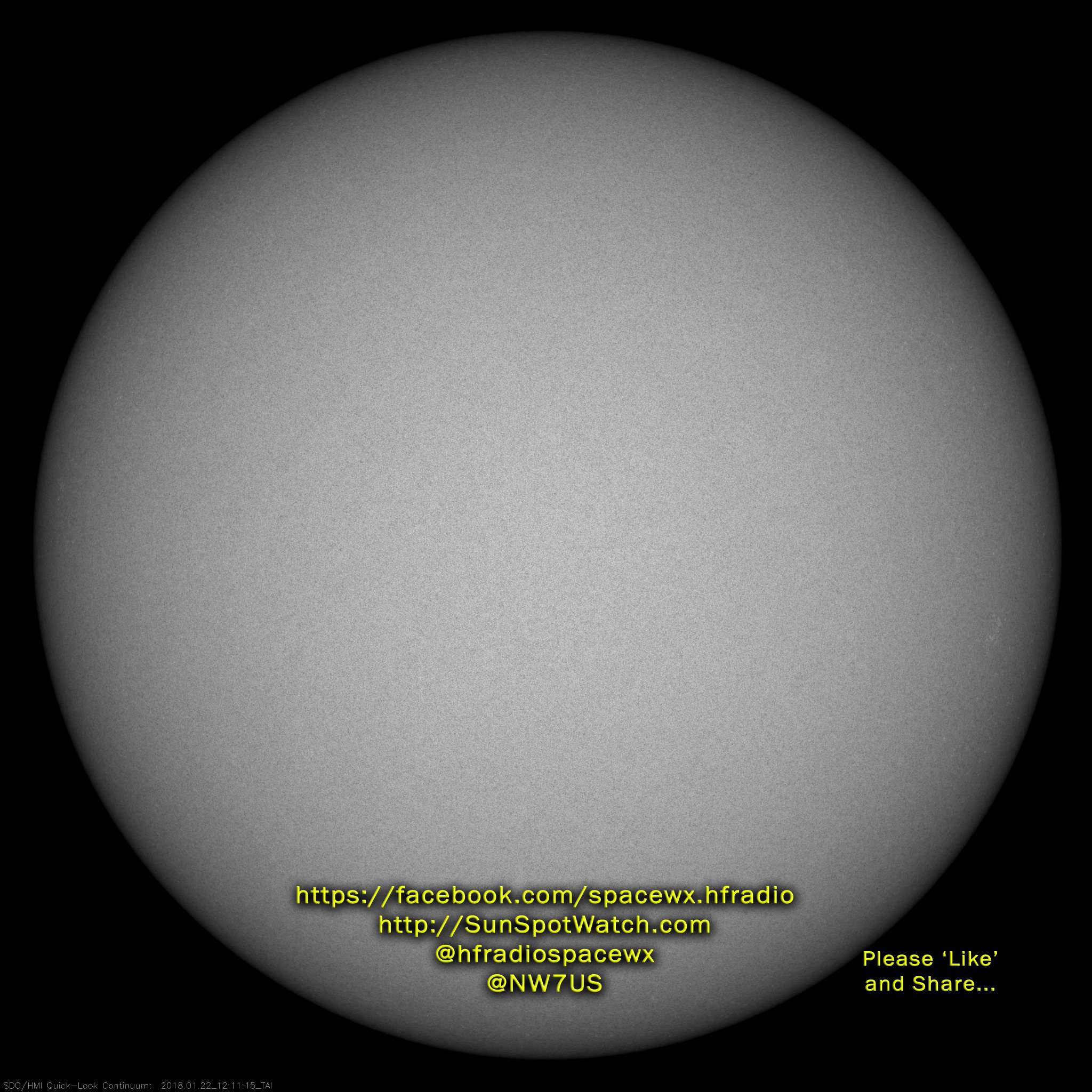 January 24, 2018 Editor: Paul Bourque, N1SFE | ||||
IN THIS ISSUE
What are the top three achievable things that you can do in one hour, one day, one week, one month, or one year to improve your HF station? Here are a few ideas to get you started:
Complete information for all contests follows the Conversation section 15 Jan - 29 Jan 2018 January 25 January 26 January 27 January 31 February 1 February 2 February 3
February 4 February 5 February 6 February 7 If you worked digital modes in the January ARRL VHF Contest, know this about your log: 'For Cabrillo file mode definitions, Digital modes can be represented as "RY" (all things digital) or "PH" as digital modes are transmitted via Phone audio.' See the January VHF Contest web page for more information. The log submission deadline for the 2018 January VHF Contest is 0359 UTC February 1, 2018. Mark, K6UFO, NAQP RTTY Contest Manager, notes that February's NAQP RTTY is coming up February 24-25, 2018. The July event will be held July 21-22, which is a correction to previously published dates for this contest. This correction will also appear in NCJ: The National Contest Journal. Dave, NK7Z, is collecting RFI samples for 'display' on his website. He's organized them into categories for the sources that are known, and is soliciting additional RFI samples in the form of screenshots taken from SDRs. Don't forget about the the ARRL Sounds of RFI web page, where you can also hear and see various types of RFI. The 44th annual Eastern VHF/UHF/Microwave Conference will be held Friday through Sunday, April 20-22, 2018, in Manchester, Connecticut. Of particular interest to UHF/VHF contesters may be two of the scheduled talks: "WSJT-X MSK144 and VHF Contesting" by K8ZR, and the "222 MHz and Up Distance Contest Forum" moderated by W9JJ. There are plenty of other talks, and the location of the event makes it easy to combine with a visit to ARRL Headquarters beforehand. Registration is open for the International DX Convention in Visalia, California on April 20-22, 2018. In past years, a pre-weekend contest-focused seminar has been offered. According to Program Chair Bill, N6RV, "We are trying to put together a contest workshop on Friday." Watch the conference website for evolving information. The Seventh Area QSO Party aka the 7QP will be held May 5-6, 2018. In 2017 a new "Open" class category was added to the County Expedition category to cover any novel operating configurations that don't fit in the other categories. All mobile stations are now allowed to use APRS position reporting, see the rules for the details. The Southeastern VHF Society Conference will be held in Valdosta, Georgia, April 26 through 28, 2018. Papers are currently being solicited for the conference in many topic areas, including contesting. Gary, ZL2IFB, submits: "It's not exactly contest oriented but I think some of your Contest Update readers will be interested to read my FT8 Operating Guide. I'm promoting better FT8 operating standards on HF, partly in the hope that more of us will make it into the log at 3Y0Z later this month." - Thanks Gary! Doug, K1DG, Chair of the Hamvention Contest Forum, wrote: "I am looking for a couple more papers to complete the program for the Contest Forum. Please let me know if you are interested in participating. Any contest-related topic is welcome. The Hamvention folks are looking for tie-ins to Emergency Communications, so if you have used your contest station and skills to help out in such a situation, let me know. If there is a specific topic you would like to see covered, let me know that, and suggest a speaker if you think you know the right person. Thanks and 73." The 20th Annual DX & Contest Meeting, organized by the OH DX Foundation, will be held March 10-11, 2018 in Turku, Finland. According to the organizers, the event focuses on "the very latest in DXing and Contesting." As far as contesting goes, WRTC 2018 will be emphasized, with presentations by Chris, DL1MGB, and two of the competing teams: Finland's Kim, OH6KZP and Pasi, OH6UM and Sweden's Ingo, SM5AJV and Gunnar, SM3SGP. Both teams will "discuss and compare their Preparation And Competition Strategies." Representatives from contest stations OH5Z and OH0Z will also be presenting on the evolution of their stations, culminating with an optional visit on Sunday, March 11, to the OH0Z site. For a complete list of activities, please see the event website. Recent changes to the ARRL DXCC program open the door to potential new 'counters' for DXCC, and that means new multipliers for contests, too. If and when new entities are recognized, look for updates to your logging program(s) to reflect them. Adaptive Filter A filter controlled by variable parameters derived from one or more optimization algorithms. Typically it is implemented as a digital filter where an error function is continuously calculated based on samples of input and reference signals, and in turn used to dynamically modify filter parameters for subsequent samples, seeking to minimize the calculated error.
Sonoma County resident Saraj, KU6F, received the "Evacuate Now!" robo-call message at 11:02 PM, October 8, 2017. Within minutes she'd personally prompted the closest neighbors to leave, then telephoned additional ones. By 11:26pm she departed her home with her pets as the Tubbs Fire approached. During the next few hours, the fire destroyed her home. Her account in the December 2017 NCCC Jug is harrowing, yet inspirational as she recounts how she is able to draw support from many people in the Amateur community. Since the fire, equipment like her Elecraft K-Line that she lost in the fire has been supplanted by the generous lending of radios and equipment from other hams. Today, although she and her family are about to move into a new home in an HOA neighborhood, she looks to the possibility of someday putting up a 'ham shack' on the old property.
Clublog's founder Michael, G7VJR, published an 'annual report' of mode usage as reflected by the uploads of contacts to the Clublog service. According to Michael: "2017 was, of course, the year when digital modes changed forever with the advent of FT8. It is a remarkable technical achievement which has breathed life and enthusiasm into DXing for a whole new audience." An Australian artist is using Morse Code in her art, with one current piece entitled "Relay League." It follows a 2012 installation entitled "Citizens Band." (Kevan, N4XL)
The January ARRL VHF Contest has just concluded and Duffey, KK6MC, is looking for high-resolution photos, stories, and anecdotes of your participation for potential inclusion in the QST contest summary and web page. He's especially interested in observations around new digital modes, rover and portable operations, and how weather played a part in contest operations. The DX (non-Italy) results for the 2017 ARI International DX Contest have been published (PDF). The overall number of logs received grew 18% from the previous year. The next running of the contest will occur 1200z May 5, 2018 through 1159z May 6, 2018. The 'full results' article for the 2017 IARU HF Contest are now available via the ARRL results articles web page. The article, written by Doug, K1DG, discusses the number of operators that traveled to take part in this contest, including many that may be competing in the WRTC 2018 event in July. During the January ARRL VHF Contest last weekend, FT8 was the elephant on the bands. Some lauded the mode's ability to make a contact when it wasn't possible on alternative mode; others scoffed at the time wasted making FT8 contacts when conditions would have supported higher rates with SSB and CW. Most agree that the recent contest reflected an uptick in VHF activity. There's quite a discussion occurring on the VHF Contesting reflector, one place to start would be with this message from Duffey, KK6MC. Changing A Window Location to Avoid a Pain In the Neck This tip was prompted by a story appearing in the Northern California Contest Club's (NCCC) December 2017 JUG newsletter (PDF): Sometimes just moving a window on the screen of your monitor can change your posture enough to reduce or eliminate operator pain or fatigue. Hank, W6SX, experienced neck pain after a RTTY contest, which he solved by changing his screen layout. He moved his logger's RTTY decoding window to a location higher on this computer monitor, which changed his neck position, and got rid of the ache. Bonus: If you need to display a website but it's not in your language, try using Google Translate (http://translate.google.com). Just type the URL into the Google Translate page, and you can choose the target language if it is not detected automatically. The IEEE Transactions on Antennas and Propagation has issued a Call for Papers for their special issue on Radio Wave Propagation to be published in October 2018. According to the announcement: "The goal is to publish papers which are based on Maxwellian physics and which address the basic physics related to propagation modeling that spans from guiding structures to antenna structures and propagation in complex media and environments and which can duplicate real experimental data without any massaging or any curve fitting. In addition applications related to this topic will also be considered." For more information, see the TAP website. Papers must be submitted by January 31, 2018. Randy, KQ6RS, has been working through RFI generated from consumer SolarEdge solar energy installations. He suggests the following steps if you think you are hearing RFI from one of these systems. First, look for interference by tuning to USB at 14.198, 21.198, 21.398, and looking for strong interference. These systems have a distinct signature, with noise occurring every 100 kHz, with stronger spurs every 200 kHz. If it is a SolarEdge system that is making the noise, it can be reduced by about 30 dB after a few hours work installing filters and rewiring, which should be left to SolarEdge. The SolarEdge starting point of contact is Teff Read. (Randy, KQ6RS, and Dennis, N6KI) Universal Radio Hacker (URH) is an open-source project that you can use in conjunction with SDR hardware to explore and decode RF digital signals. It helps you explore everything above and including the 'physical layer' of the protocol stack. Applications could include decoding the protocol a wireless doorbell is using, or getting your weather station's data into your PC using a cheap DVB-T dongle. Forgot your footswitch for a contest, but just happen to have access to a 3D printer, and have a microswitch in the junk box? Try this 'printable' design from RemoteQTH.com. You might have to tread lightly to make it to the end of the contest. He's a Contesting Machine! A non-ham friend and I were having a discussion the other day about radio contesting. Since he's a friend, he's come around to thinking it's more quaint than bizarre that I sometimes spend weekends in front of the radio. He doesn't understand why there's such an allure to trying to exchange information through an imperfect medium - he's definitely a layer 7 and above kind of person. "Why don't you just write a computer program to do the contest for you? You told me you were having computer issues the last time you were gone for a contest weekend, aren't you using computers already?" Why not indeed? In the name of progress and bigger contest scores, we're ever-increasing the use of automation and software to assist the operator. Logging programs today can:
The role of the operator has evolved, too. Though for CW and SSB operator copying ability is important, today's operators must be more skilled in information management and situational awareness than ever before. Since the nitty-gritty contact details are handled, the operator is working at a higher level. We admire the operators that can run pileups on two bands simultaneously, since they are 'rate machines!' The qualities we admire for radio contesting prowess implicitly accelerate the dehumanization of radio contesting. Machines and robots are not new in radio contesting. Back in 2005, Ward, N0AX, wrote about WU1F's 'TACO' bot, and N6TR's 'Z80' program that made Field Day contacts on their own. The Z80 moniker should provide a hint to the 1986 vintage of the code. Ward wrote at the time that: "It's going to take a long time, though, before machine- and human-copy signals can mix it up together to the point of a human not realizing that they are communicating with a machine." In a contest situation, the messages in a QSO are very constrained, and today there's no difference between the response you'd expect from a human or a machine. Providing anything but the exchange even to human operators will more likely than not get a robotic 'agn?' or 'nr?' What if we have already reached 'peak human' in radiosport? Many who have used WSJT-X and FT8 comment on how 'auto-sequencing' QSOs is the only reliable way to make the '15 second window deadline' for the each phase of a FT8 QSO. Auto-sequencing is normalizing the behavior and acceptability of letting the computer make the contact, relinquishing the role of the operator to monitoring the contact and providing the final "OK" to log the QSO. One person's de-skilling of the QSO process is another person's contesting aid. Will something like WSJT-X's 'autoseq' functionality turn up in a RTTY-capable logging program next? A logging program that incorporates such a feature would be an advantage to an operator. I'd imagine the feature would do the same thing as a human: After sending a CQ, listen for tones in the decoding channel and look for calls being decoded; highlight them by matching them to a database of call patterns, or actual call signs; pick the one that hasn't been worked on this band mode, or is a juicy multiplier, enter it in the call sign box; wait for no tones to be detected in the decoding channel, then send the exchange. That would certainly beat the 'operator skill' of chasing a call sign around with the mouse in the decoding window under noisy band conditions. From my own interpretation of the current ARRL RTTY Roundup rules, it does not appear that a human-supervised RTTY "bot" is forbidden. FCC rules do however mandate that humans must initiate transmissions when outside the automatic-control sub-bands. Any bot will have to wait for the human to press the 'CQ' button. Is there room in the hobby for those who want to advance the state of the radio art by building competitive contesting bots? That's all for this time. Remember to send contesting related stories, book reviews, tips, techniques, press releases, errata, schematics, club information, pictures, stories, blog links, and predictions to contest-update@arrl.org 73, Brian N9ADG 15 Jan - 29 Jan 2018 An expanded, downloadable version of QST's Contest Corral in PDF format is available. Check the sponsor's Web site for information on operating time restrictions and other instructions. HF CONTESTS CWops Mini-CWT Test, Jan 24, 1300z to Jan 24, 1400z, Jan 24, 1900z to Jan 24, 2000z, Jan 25, 0300z to Jan 25, 0400z; CW; Bands: 160, 80, 40, 20, 15, 10m; Member: Name + Member No., non-Member: Name + (state/province/country); Logs due: January 27. VHF+ CONTESTS See F9AA Cup and Vermont QSO parties, above. 15 Jan - 29 Jan 2018 January 25, 2018 January 26, 2018 January 27, 2018 January 28, 2018 January 29, 2018 January 31, 2018
February 1, 2018 February 2, 2018 February 4, 2018 February 5, 2018 February 6, 2018 ARRL Information Click here to advertise in this newsletter, space subject to availability. Your One-Stop Resource for Amateur Radio News and Information ARRL membership includes QST, Amateur Radio's most popular and informative journal, delivered to your mailbox each month. Subscribe to NCJ - the National Contest Journal. Published bimonthly, features articles by top contesters, letters, hints, statistics, scores, NA Sprint and QSO Parties. Subscribe to QEX - A Forum for Communications Experimenters. Published bimonthly, features technical articles, construction projects, columns and other items of interest to radio amateurs and communications professionals. Free of charge to ARRL members: Subscribe to The ARRL Letter (weekly digest of news and information), the ARES E-Letter (monthly public service and emergency communications news), Division and Section news -- and much more! ARRL offers a wide array of products to enhance your enjoyment of Amateur Radio. Visit the site often for new publications, specials and sales. Donate to the fund of your choice -- support programs not funded by member dues! Reprint permission can be obtained by sending email to permission@arrl.org with a description of the material and the reprint publication. ACKNOWLEDGEMENTS ARRL Contest Update wishes to acknowledge information from WA7BNM's Contest Calendar and SM3CER's Contest Calendar. | ||||









